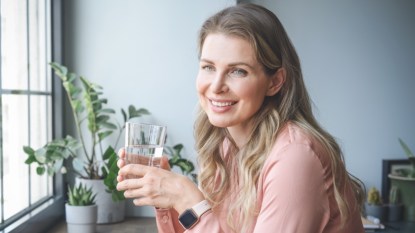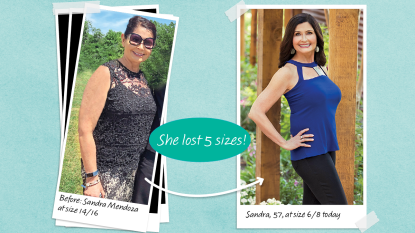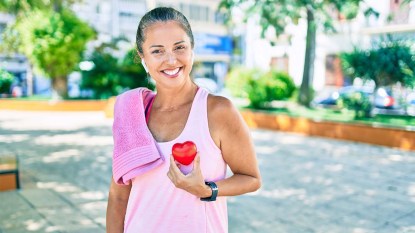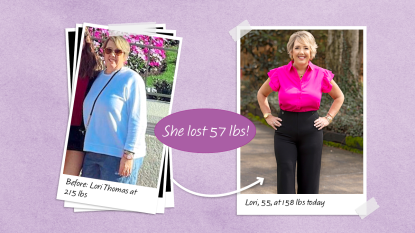Yoga for Women Over 50: Four Poses for Every Fitness Level
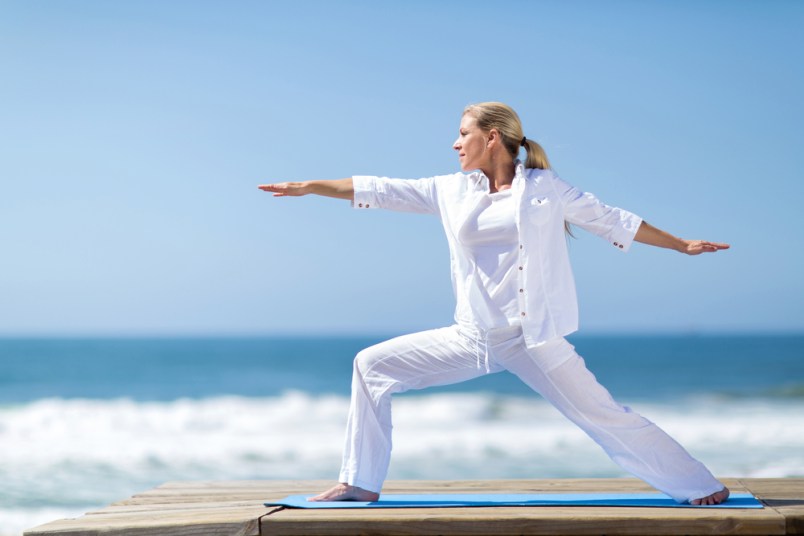
Lots of Yoga is here to help you learn everything you need to know about starting yoga over 50. Developing a yoga practice in your 50s and beyond is one of the best things you can do for your health and happiness. By incorporating yoga into your daily routine, you can stay more in tune with your body and create space for your mind. Yoga has been scientifically proven to be beneficial for weight loss and overcoming anxiety. It’s also a great way to make new friends. Lots of Yoga gave us some valuable insight into yoga over 50, and now we have some yoga exercises that will work for you, regardless of your fitness level.
Yoga Over 50: What’s your fitness level?
Many people seem to think that because they can’t touch their toes, they shouldn’t do yoga. That’s complete nonsense. Yoga is about learning to synchronize your breath with movement and eventually develop an inner sense of peace. It really has no specific end-goal, nor does it require anyone to “look” the part.
We break down three levels of fitness so that you can start practicing each pose for three to five breaths at a level that does not strain your breathing. By slowly working through the levels (ideally six days a week), you should gradually begin to see a difference in your flexibility, strength, and stress levels. Finally, don’t forget to consult your doctor on the suitability of any physical exercises. We also strongly encourage you to find a teacher that you can practice with and learn from.
(A) Inactive
You are at Level A if you have not been exercising and want to start now.
If this sounds like you, the instructional video Ease into Yoga: Seated Yoga for Beginners might be helpful!
(B) Fairly Active
You’re reasonably active. You may squeeze in a workout once in a while, or you might just have a busy day-to-day life, running around for work or chasing after kids. You most probably view yourself as active, but not exactly athletic. You’re a level B.
(C) Active
Level C folks are those who have always worked out in some way and view themselves as “active” or “very active.”
Yoga Poses for Women Over 50
Here are four yoga poses and three variations of each one for you to try, depending on your fitness level. Try to hold each pose for three to five full breaths.
1. Downward-Facing Dog
To many, downward-facing dog is the staple pose in yoga. You could do up to 30 or more downward-facing dog poses in any given yoga-flow class. Its benefits include opening of the shoulders and the chest, as well as stretching the hamstrings and spine. From a kneeling position on hands and knees, step on the toes while keeping the hands and feet securely in place, and lift the bottom all the way up toward the ceiling, aiming to gently push the head toward the knees, creating an upside-down “V” shape. Hands should be shoulder-distance apart, feet should be hip-distance apart, and the gaze should be between the thighs or at the navel.
(A) Lean on the back of a chair.
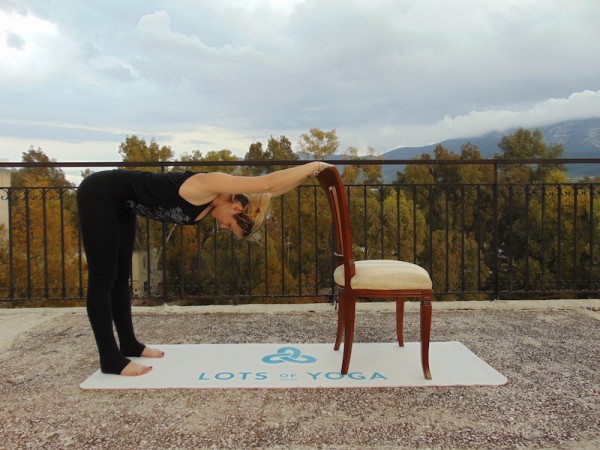
(Photo Credit: Lots of Yoga)
Place your hands on the back of a chair and try to get your head past the forearms to get a maximum stretch in the shoulders.
(B) Lean on the seat of a chair.
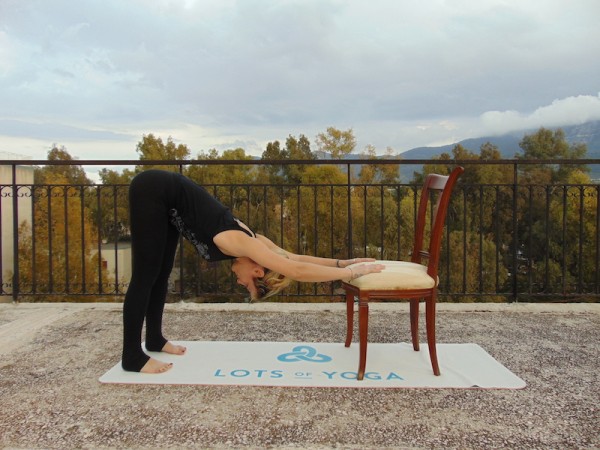
(Photos Credit: Lots of Yoga)
Use the seat of a chair to get further toward the ground. Bend the knees to relieve tension in the hamstrings.
(C) Full Downward-Facing Dog
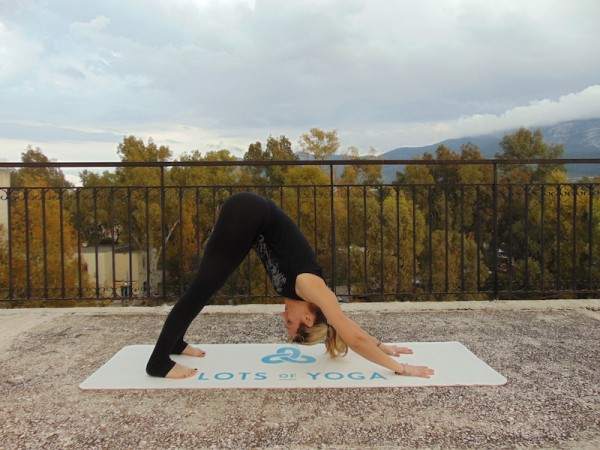
(Photo Credit: Lots of Yoga)
Place hands shoulder-distance apart on the mat and feet hip-distance apart. Then, push through the hands and feet while opening the chest, and head toward the thighs.
2. Seated Forward Bend
The seated forward bend pose stretches the hamstrings and the spine, and it is also often used as a restorative yoga pose to relieve pressure in the lower back. From a seated position, stretch out the legs in front of you, keeping the back as straight as possible. Hinge forward from the hips — trying not to round the back — as far as you can go, and hold the pose there.
(A) Sit on a chair.
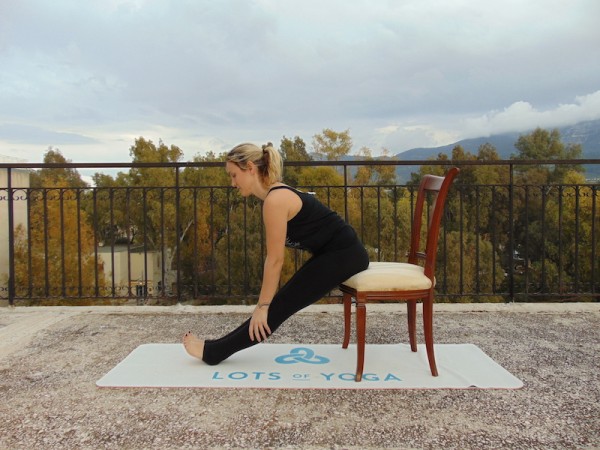
(Photo Credit: Lots of Yoga)
Sit on the edge of a chair and bend forward at the hips, keeping the spine straight.
(B) Use a strap.
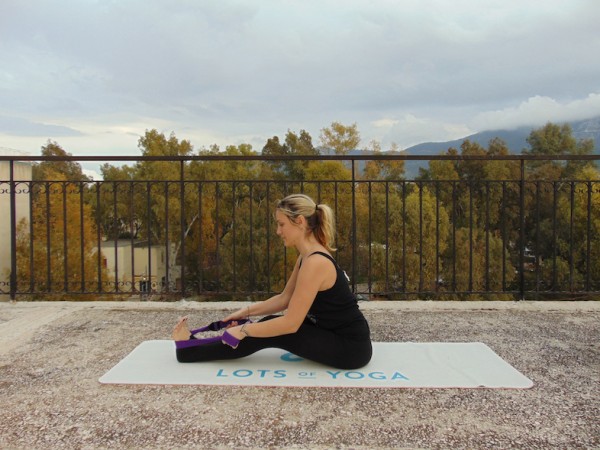
(Photo Credit: Lots of Yoga)
Wrap a strap around the feet and hold onto it while gently pulling yourself forward, keeping the spine as straight as possible.
(C) Full Seated Forward Bend
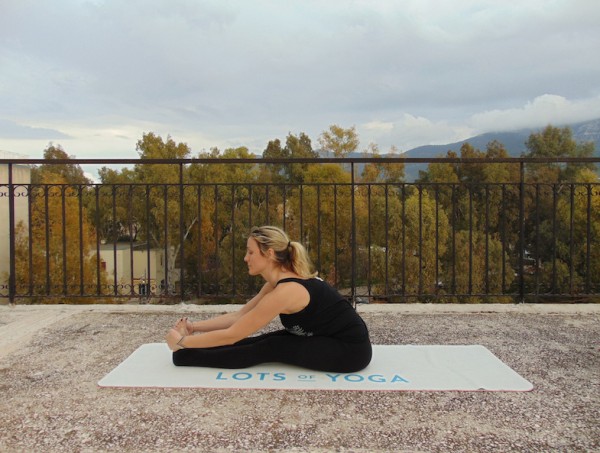
(Photo Credit: Lots of Yoga)
With the legs stretched out in front of you, fold forward while bending at the hips and hold on to the feet. Allow a slight bend in the knees to relieve any tension in the hamstrings.
3. Triangle Pose
One of the most popular poses in yoga’s standing sequence, triangle pose provides a deep stretch in the hamstrings and the side body while opening up the chest and shoulders. It really utilizes the spine, giving it a much-needed stretch. From a standing position, take a big step back while keeping feet on either side of an imaginary line, the front foot facing forward and the back foot angled inward at a 45-degree angle. Raise the arms out by the side, lean the upper body forward over the front leg, and twist the torso so that the front hand comes down to meet the front shin and the other hand is raised to the sky, keeping the gaze on the upper hand.
(A) Lean on the back of a chair.
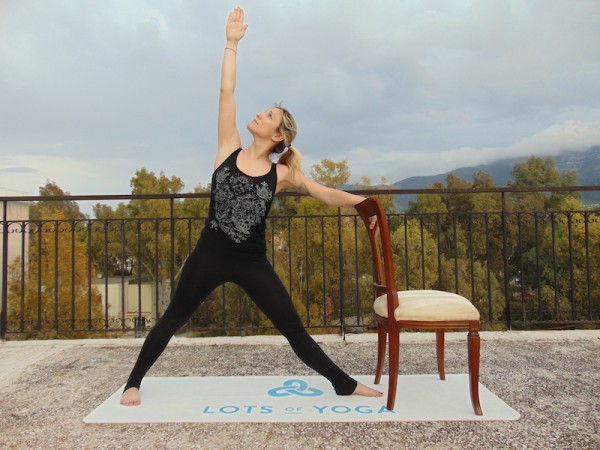
(Photo Credit: Lots of Yoga)
From a standing position, take a big step backward and hold on to the back of a chair with one hand, raising the other hand and upper body toward the sky.
(B) Lean on the seat of a chair.
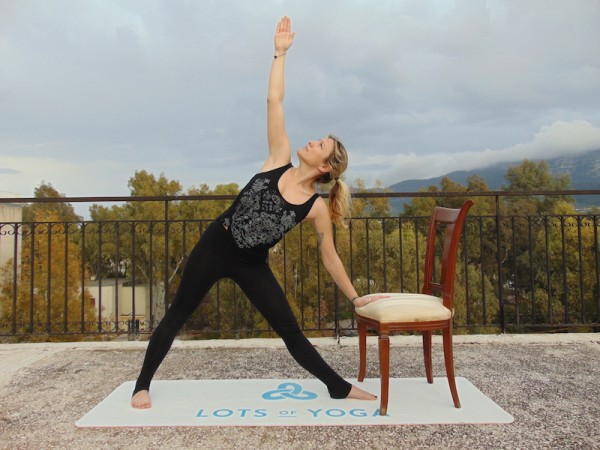
(Photo Credit: Lots of Yoga)
Leaning on the chair seat, twist the upper body and upper hand toward the sky.
(C) Full Triangle Pose
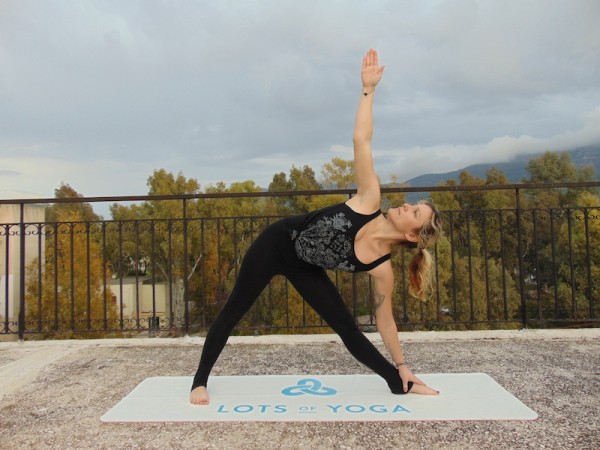
(Photo Credit: Lots of Yoga)
While trying to keep the upper body and pelvis tucked in, bend the upper body down toward the foot while rotating the upper body upward and gazing toward the sky.
4. Warrior II Pose
Another yogi favorite, the Warrior II pose is as strong as it sounds. Done properly, it works out the core, the legs (especially the thighs), opens up the shoulders, and tones up the bum. From a standing position, take a big step back with one foot, keeping feet on either side of an imaginary line, the front foot facing forward and the back foot angled at 90 degrees. Bend the front knee so that the knee is directly above the ankle. Raise the arms out by the side and face forward, gazing over the front arm.
(A) Straddle a chair.
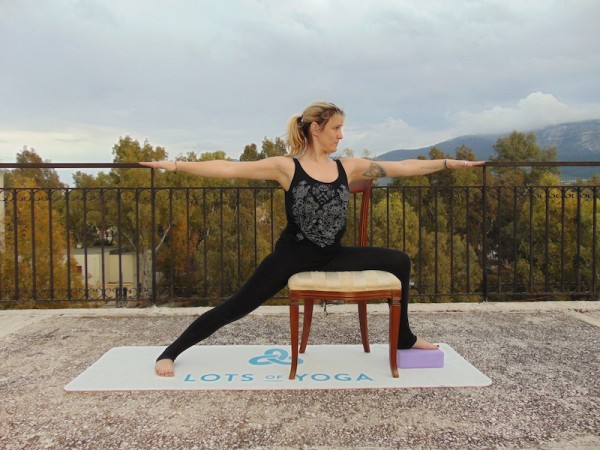
(Photo Credit: Lots of Yoga)
Sit on a chair sideways so that your front leg is over the chair and the back leg is on the floor, with the back foot at a 90-degree angle. Raise the hands up so that they are parallel to the floor and gaze forward.
(B) Put the back knee on a prop.
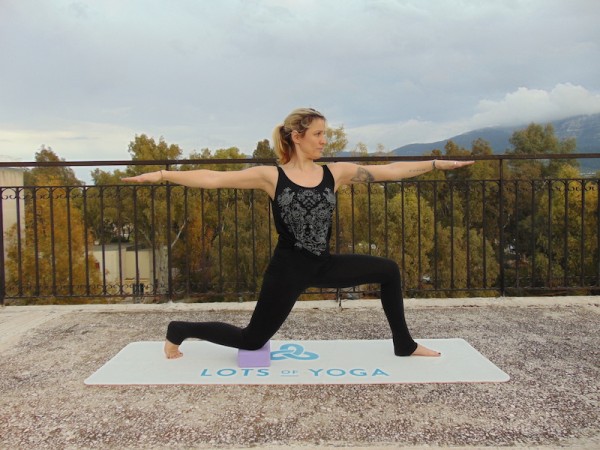
(Photo Credit: Lots of Yoga)
With this variation, you can keep the back knee on the floor or on a block, keeping the front knee directly over the ankle.
(C) Full Warrior II Pose
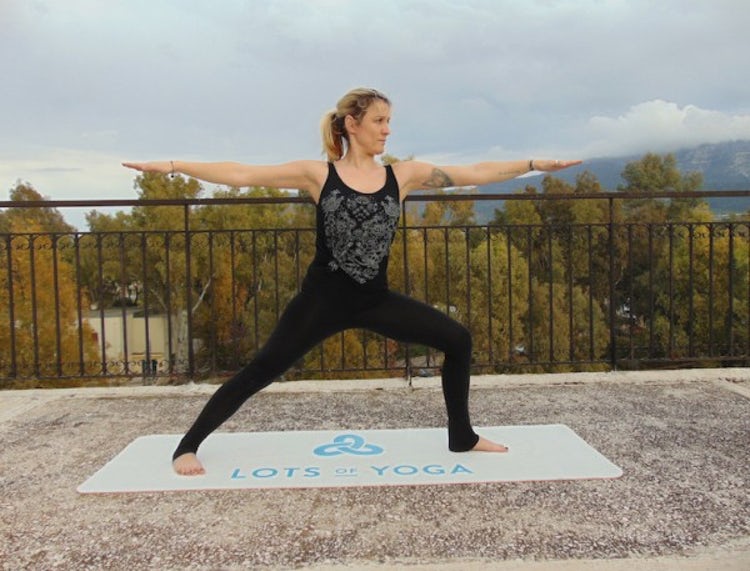
(Photo Credit: Lots of Yoga)
Keep your weight distributed evenly between the back and front legs, and keep the front knee over the ankle and body straight, facing forward.
And when you are done, we encourage you to lie down on the mat in a pose called “savasana,” also known as “corpse pose.” Try to take ten full breaths. If you have never tried meditating before, try to remind yourself to let go in this pose, letting your body relax and completely melt into the mat. Remember, in the beginning some poses may be more challenging than others, but by persisting every day, you will start to build confidence and your muscles will adapt, getting stronger and leaner.
This article originally appeared on our sister site, Yours.
More From Woman’s World
Be Kind to Your Mind With the 8 Best Memory Supplements for Women Over 50
The Most Popular Homeopathic and Holistic Remedies to Treat Common Ailments
Reduce Pain and Swelling With the 7 Best Supplements for Inflammation


